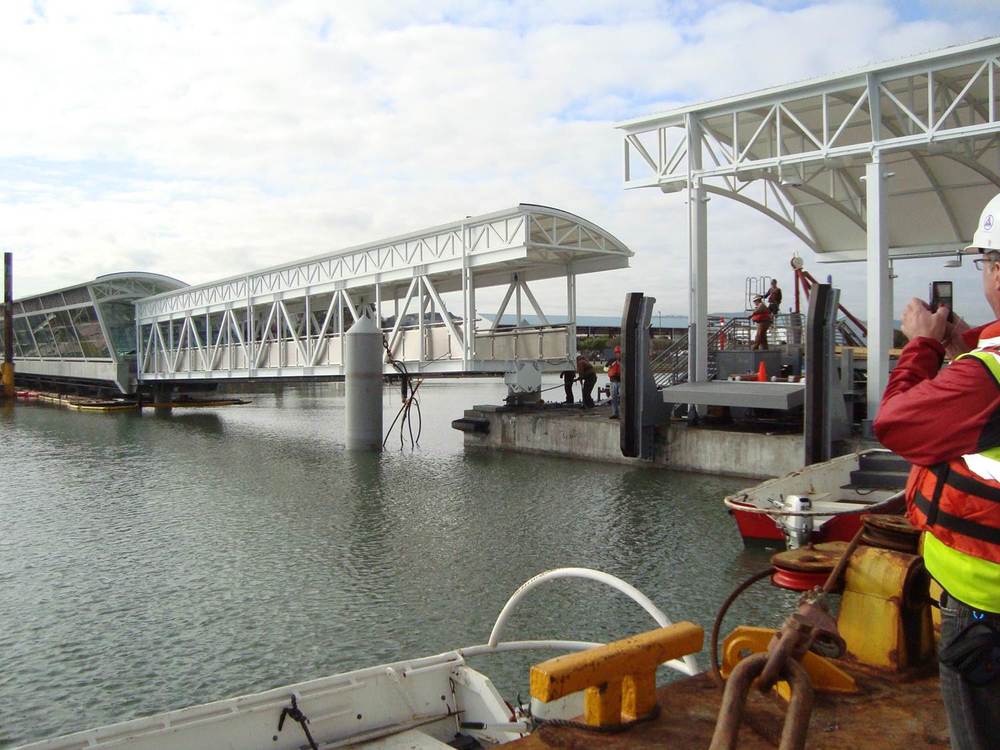The Harbor District approved installing wifi at Pillar Point Harbor and Oyster Point Marina last night. This will be great for harbor/marina tenants, fishermen selling local seafood from boats at Pillar Point, commuters waiting for a ferry at Oyster Point, and recreational users.
Matier & Ross do the ferry service math
South San Francisco ferry loaded with subsidies
SF GATE: Phillip Matier and Andrew Ross, Chronicle Columnists. Updated 11:43 a.m., Monday, June 25, 2012
That new ferry line to South San Francisco opened to a lot of fanfare, offering rides to and from Oakland and Alameda in less than 55 minutes.
What's not being talked about is that for every $14 round-trip ticket sold, the public will be kicking in a subsidy of nearly $100.
People who pay taxes and tolls will be picking up the bill for an armada of costs for the new ferry over the next 20 years. They include:
-- $26 million for the new Oyster Point ferry terminal, paid for largely with San Mateo County sales tax money.
-- $16 million for two 140-seat ferries, paid for from Bay Area bridge tolls.
-- And a $2.6 million annual operating subsidy, also paid from Bay Area bridge tolls.
Add it all together and you get $94 million over two decades. At an estimated 100,000 riders annually, that comes out to a public subsidy of $47 per ride - or $94 for every round trip.

Just to run the service next year - without taking into account any startup costs - the public subsidy is expected to total $26.60 per one-way ride.
By comparison, the Water Emergency Transportation Authority expects 472,000 riders next year on its Alameda/Oakland to San Francisco ferry, with a subsidy of $8 per ride.
For Golden Gate ferry service, which carries 2 million riders annually between San Francisco and Sausalito and Larkspur, the public subsidy amounts to about $15 per ride.
"The question is, will (the South San Francisco ferry) pencil out on the ridership and financial side?" said spokesman Randy Rentschler of the Metropolitan Transportation Commission. "I think the jury is still out."
Ernest Sanchez, manager of the water authority's new South City line, said the agency is counting on ridership growing - even if it can't say by how much.
He says the spending is an investment in both the region's emergency preparedness and its congestion relief efforts.
South San Francisco is also betting on the ferry service to spur development. That explains why biotech giant Genentech and other local companies - which together employ between 25,000 and 30,000 workers - campaigned for the sales tax increase to pay for the Oyster Point terminal.
"There are space limitations out there, and it is difficult for them to keep building conventional parking spots and to jam people up at the freeway interchange," said Marty Van Duyn, an assistant city manager.
What's more, local real estate interests are looking to build office parks on more than 70 acres around the terminal.
In any event, says Rentschler, the ferry "is always going to be the Cadillac of service - you get tons of space to chill, and you can even have a beer on your way home, and it's always going to be subsidized."
San Francisco Chronicle columnists Phillip Matier and Andrew Ross appear Sundays, Mondays and Wednesdays. Matier can be seen on the KPIX-TV morning and evening news. He can also be heard on KCBS radio Monday through Friday at 7:50 a.m. and 5:50 p.m. Got a tip? Call (415) 777-8815, or e-mail matierandross@sfchronicle.com.
